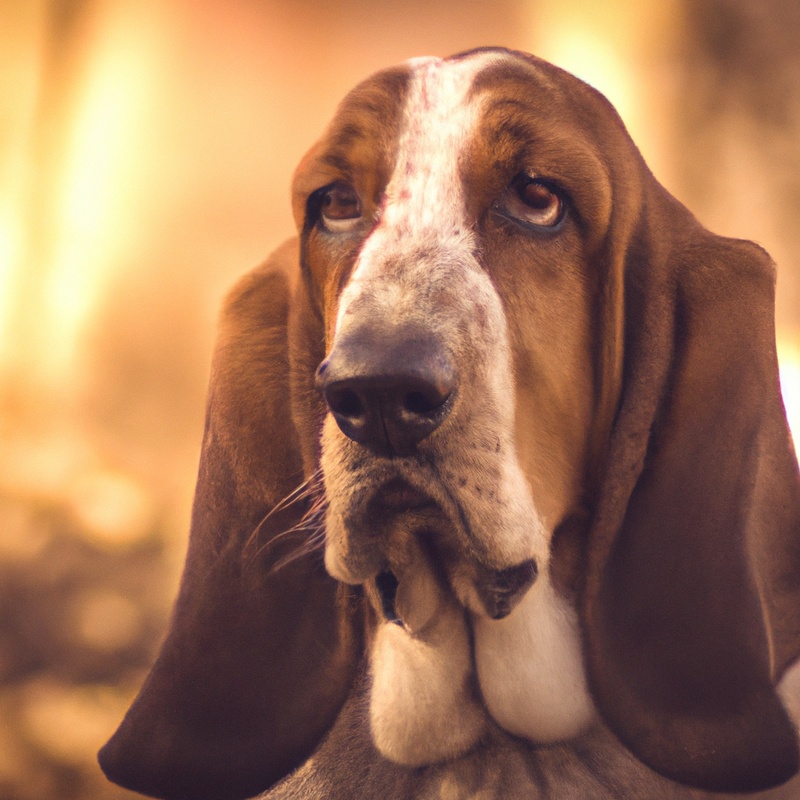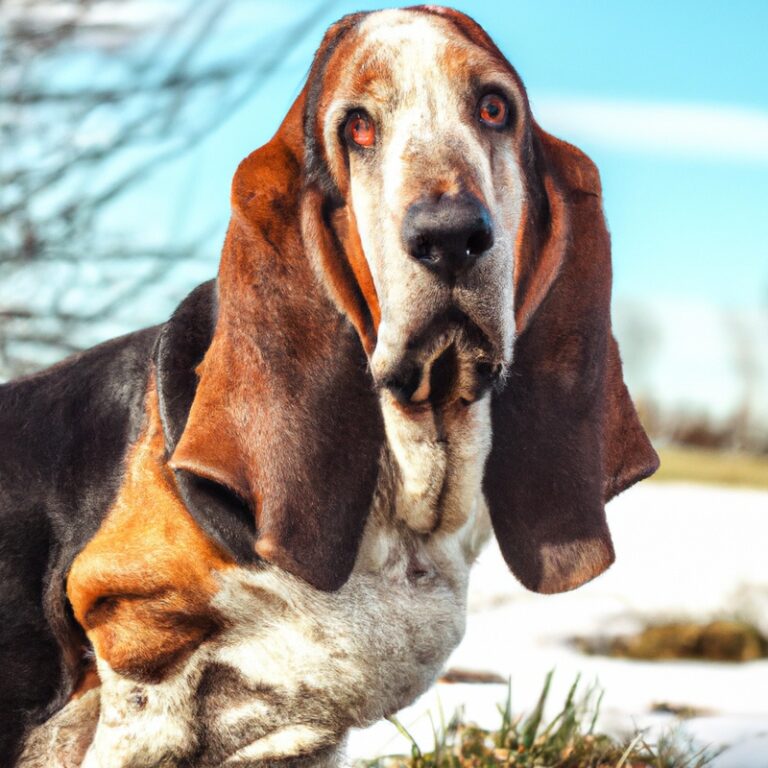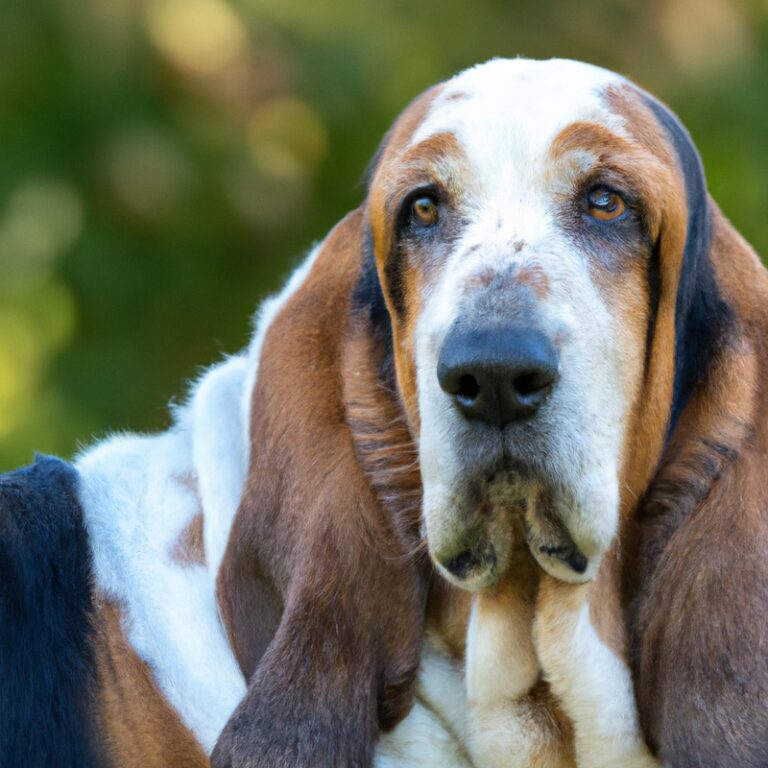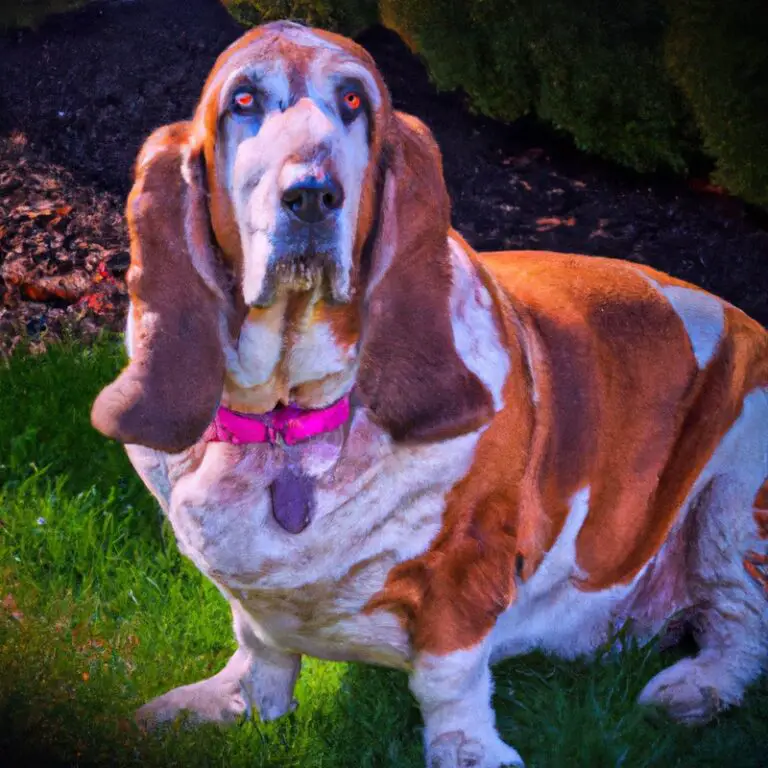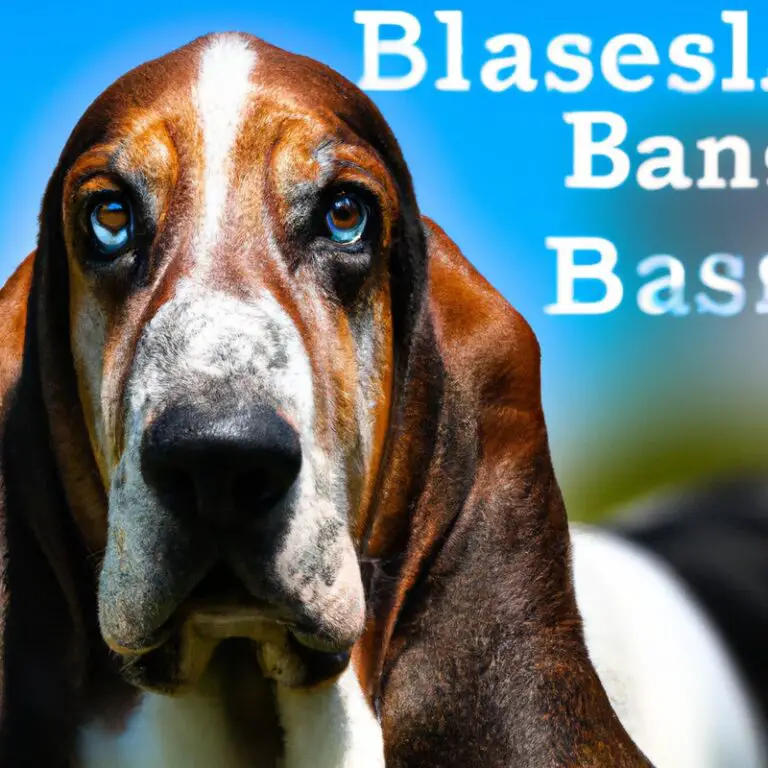How Do Basset Hounds Behave Around Unfamiliar Cats?
Key Takeaways:
- Basset Hounds tend to be generally friendly towards unfamiliar cats, but individual temperament may vary.
- Proper socialization and training can help Basset Hounds establish positive relationships with unfamiliar cats.
- Supervision is crucial when introducing Basset Hounds to unfamiliar cats, to prevent any misunderstandings or potential conflicts.
- Basset Hounds may display natural hunting instincts towards unfamiliar cats, so careful monitoring is advised.
Are you a proud Basset Hound owner, or considering adding one to your family? If so, understanding their behavior around unfamiliar cats is crucial.
As an expert in the field, I’m here to guide you through the ins and outs of this intriguing dynamic.
Basset Hounds have a distinct temperament influenced by various factors, which ultimately shape their reactions towards unfamiliar feline friends. In this article, we’ll explore potential scenarios, highlight key influencing factors, and provide practical tips for introducing these lovable droopy-eared pups to unknown cats.
Get ready to unravel the mysteries of Basset Hound and cat interactions!
| Basset Hound Behavior with Unfamiliar Cats | Description |
|---|---|
| Curiosity | Basset Hounds are naturally curious and may approach unfamiliar cats with interest. |
| Gentle Nature | They have a generally gentle and friendly nature, which may make them less likely to be aggressive towards unfamiliar cats. |
| Scent-driven | Bassets rely heavily on their sense of smell and may become fixated on the scent of the cat, which could potentially cause excitement or hunting behavior. |
| Chill Demeanor | Bassets are known for their calm and laid-back demeanor, which may make them less likely to pester or chase unfamiliar cats. |
| Varied Reactions | Individual Basset Hounds may have different reactions to unfamiliar cats, ranging from curious and friendly to indifferent or cautious. |
Understanding Basset Hounds’ Behavior
Overview of Basset Hound Temperament
Basset Hounds have a unique temperament characterized by their calm, laid-back nature.
They are friendly, gentle, and easygoing dogs that love to be around people and other animals.
Bassets are known to be loyal and affectionate, making them great companions.
They may exhibit some stubbornness at times, but with patience and consistent training, they can be well-behaved pets.
Bassets are generally good with children and other pets, although supervision is always recommended.
They have a strong sense of smell and are known for their tracking abilities.
Basset Hounds are generally easy to care for and adapt well to different living environments.
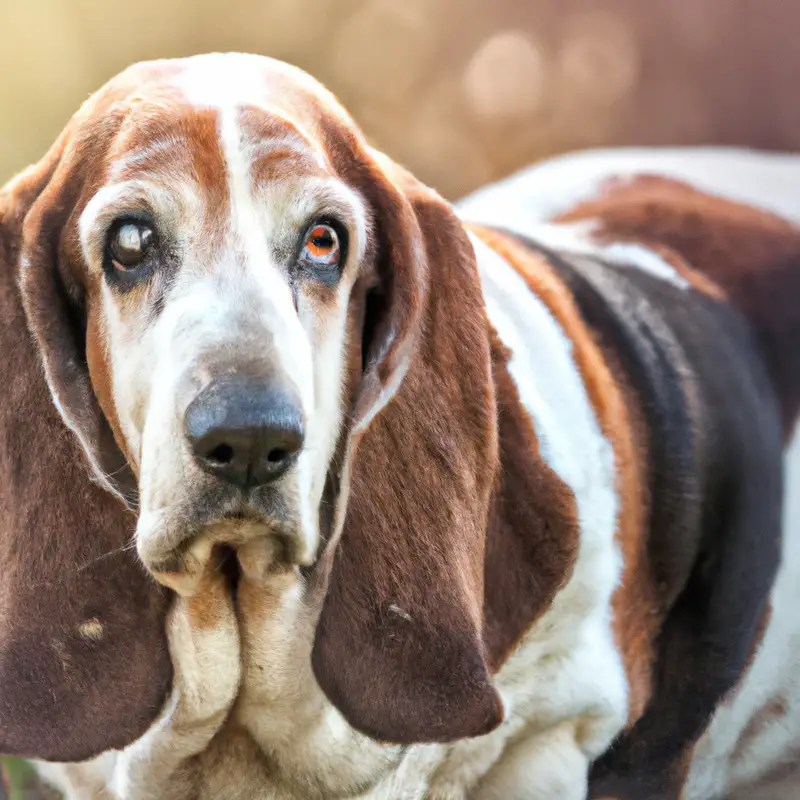
Key Factors Influencing Basset Hound’s Behavior
The behavior of Basset Hounds is influenced by several key factors. Firstly, genetics plays a significant role in determining their temperament and natural tendencies.
Secondly, early socialization and positive experiences with people, animals, and various environments are crucial in shaping their behavior.
Thirdly, the level of training and obedience they receive also impacts how they interact with their surroundings. Additionally, the environment they are raised in, including their living conditions and daily routines, can greatly affect their behavior.
Understanding these key factors can help owners better understand and manage their Basset Hound’s behavior.
How Basset Hounds React to Unfamiliar Cats
Potential Scenarios and Reactions
Basset Hounds can react to unfamiliar cats in various ways. Here are some potential scenarios and reactions you might see:
- Curiosity: Your Basset Hound may approach the cat calmly, sniffing and observing them with curiosity.
- Indifference: Some Basset Hounds may simply ignore the cat and continue with their own business.
- Playfulness: If both animals are friendly, they may engage in playful interactions, chasing each other or wrestling.
- Fear or Anxiety: Your Basset Hound might show signs of fear or anxiety around the cat, such as hiding, trembling, or avoiding eye contact.
- Aggression: In rare cases, a Basset Hound may display aggression towards the cat, growling, barking, or even attempting to chase or attack.
It’s important to monitor their interactions closely and ensure the safety of both pets.
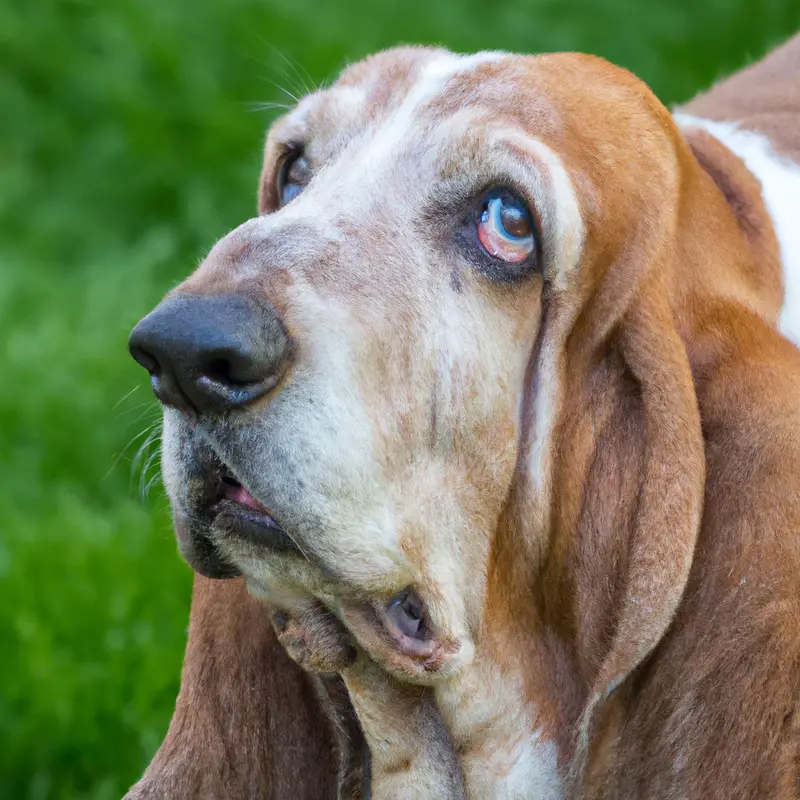
Factors Affecting Basset Hounds’ Behavior Towards Cats
Basset Hounds’ behavior towards cats can be influenced by several factors.
The temperament of the individual dog plays a significant role – some Basset Hounds may naturally be more curious and friendly towards cats, while others may be more aloof or even aggressive.
The dog’s previous experiences with cats can also shape their behavior, as positive or negative interactions can create lasting impressions.
Additionally, the age and socialization of the Basset Hound can impact how they behave around cats.
It’s important to remember that every dog is unique, and their behavior towards cats may vary.

Signs of Positive Interaction
Positive signs of interaction between Basset Hounds and unfamiliar cats include:
- Relaxed body language: A Basset Hound with a loose wagging tail, relaxed facial expression, and a neutral posture indicates a positive attitude towards the cat.
- Playful behavior: Basset Hounds may engage in playful gestures like bowing, wagging their tail, or offering toys to the cat.
- Calm approach: When a Basset Hound approaches a cat calmly and without lunging or barking, it suggests a potential willingness to socialize.
- Curiosity and sniffing: Basset Hounds may show interest in the cat by sniffing or investigating them gently.
- Content coexistence: If the Basset Hound and the cat can comfortably share space without aggression or fear, it suggests a positive interaction.
Remember, each dog and cat interaction is unique, and it’s essential to observe their behavior carefully for mutual comfort and safety.
Tips for Introducing Basset Hounds to Unknown Cats
Gradual Introduction in Controlled Environment
When introducing your Basset Hound to an unknown cat, a gradual and controlled environment is essential.
Start by keeping them in separate rooms and gradually introduce their scents by swapping bedding or using a towel to rub each animal.
Next, allow them to see each other through a baby gate or a cracked door.
Once they seem comfortable, you can proceed to supervised face-to-face interactions.
It’s important to closely monitor their behavior and never force interactions.
Patience and positive reinforcement are key.
Utilizing Positive Reinforcement Techniques
Positive reinforcement is a powerful technique when introducing your Basset Hound to unfamiliar cats.
Here are a few key strategies:
- Reward desirable behavior: When your Basset Hound calmly approaches or interacts positively with a cat, praise and reward them with treats or verbal affirmations.
- Use treats or toys: Give your Basset Hound treats or engaging toys when they exhibit calm and non-threatening behavior around cats. This reinforces positive associations.
- Gradual exposure: Start with controlled interactions at a distance and gradually decrease the distance over time, rewarding your Basset Hound for calm and positive behavior.
- Consistency is key: Be consistent with the use of positive reinforcement techniques to reinforce desired behaviors and minimize negative reactions.
Supervision and Safety Measures
Supervision and Safety Measures are essential when introducing your Basset Hound to unfamiliar cats. Always closely monitor their interactions to ensure the safety of both animals.
Here are some key tips to keep in mind:
- Keep them separated initially: Start by keeping the cat and Basset Hound in separate areas of the house. Use a baby gate or closed door to provide a physical barrier.
- Slow and gradual introduction: Once they seem calm, you can start allowing supervised interactions. Keep the dog on a leash at first to maintain control.
- Use positive reinforcement: Reward both the dog and cat for calm behaviors and positive interactions. Treats or praise can help reinforce good behavior.
- Provide escape routes: Cats should have access to high places or hiding spots where they can retreat if they feel overwhelmed. This gives them a sense of security.
- Baby steps: Increase the duration and proximity of their interactions gradually. Be patient and give them time to adjust to each other’s presence.
Remember, every dog and cat is unique, and it may take time for them to become comfortable with one another. Always prioritize the safety and well-being of both animals during the introduction process.
Common Challenges and Solutions
Basset Hounds Chasing Cats
Basset Hounds have a strong prey drive, which can make them prone to chasing cats.
This behavior can be worrisome, especially if you’re introducing your Basset Hound to an unfamiliar cat.
When a Basset Hound chases a cat, it’s essential to intervene promptly to prevent any harm to the cat.
Keeping your Basset Hound on a leash and teaching them the “leave it” command can help curb their chasing instincts.
Positive reinforcement training can also be effective in redirecting their attention and teaching them to interact peacefully with cats.
Close supervision is crucial during any introductions to ensure everyone’s safety.
Possessiveness and Resource Guarding Behavior
Possessiveness and resource guarding behavior can be a challenge with Basset Hounds around unfamiliar cats.
Some Basset Hounds may show possessive behavior over their food, toys, or even their humans.
They may become defensive and show aggression if another animal comes near their belongings.
It’s important to address this behavior early on through training and positive reinforcement techniques.
Ensuring that both the Basset Hound and the cat have their own space and resources can also help minimize conflicts.
Fear and Aggression Issues
Fear and aggression issues can arise in Basset Hounds when they encounter unfamiliar cats.
These behaviors are often rooted in their natural instincts and past experiences.
Fear can lead to defensive reactions such as growling, barking, or even lunging.
Aggression may manifest as chasing, snapping, or biting.
Understanding these issues is important for effective management.
Employing gradual introduction techniques, positive reinforcement, and supervision can help address these challenges.
Seeking professional help may be necessary in severe cases.
Training and Socializing Basset Hounds with Cats
Importance of Early Socialization
Early socialization is crucial for basset hounds.
It helps them develop positive behaviors and adapt to new environments.
By exposing them to different people, animals, and situations during their early months, you can prevent fear and aggression issues later on.
It’s important to gradually introduce them to cats, ensuring positive interactions and supervised play.
Basic obedience training can also aid in their socialization process.
Seeking professional help if needed is always a good idea.
Basic Obedience Training for Positive Behavior
Basic obedience training is essential for promoting positive behavior in Basset Hounds. Teaching them commands such as “sit,” “stay,” and “come” is a great way to establish boundaries and ensure their safety.
Positive reinforcement techniques, such as using treats or praise, are effective in motivating and rewarding desired behaviors.
Consistency and patience are key when training Basset Hounds, as they may be stubborn at times. With proper training, Basset Hounds can become well-mannered and obedient companions.
Seeking professional help can be beneficial if you encounter any challenges during the training process.
Seeking Professional Help if Needed
If you’re having difficulties introducing your Basset Hound to unfamiliar cats or dealing with challenging behavior, seeking professional help is a great option. A professional dog trainer or animal behaviorist can provide expert guidance and support tailored to your specific situation.
They can assess the behavior of both your Basset Hound and the cats, identify any underlying issues, and recommend effective training techniques and strategies.
Remember to choose a professional with experience in dealing with dog-cat interactions. They can help you create a safe and harmonious environment for both your furry friends.
Don’t hesitate to reach out and get the assistance you need.
Final Verdict
Understanding a Basset Hound’s behavior around unfamiliar cats is crucial for a harmonious coexistence. Factors such as temperament, past experiences, and socialization play a significant role in their reactions.
Gradual introductions, positive reinforcement techniques, and close supervision can enhance the chances of a positive interaction between Basset Hounds and cats.
It is essential to address common challenges like chasing, possessiveness, and aggression promptly. By prioritizing early socialization and incorporating basic obedience training, we can create a peaceful environment where Basset Hounds and cats can thrive together.

